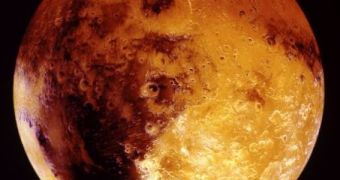At least some of Mars' valleys were carved by either snow or rain that fell on this planet millions of years ago, Brown University researchers argue in a paper published in the journal Geophysical Research Letters.
The scientists explain that such natural phenomena are known as orographic precipitation, and that they occur whenever moist winds encounter mountains and get pushed upward by them.
Specialist Kat Scanlon, who is familiar with orographic precipitation, explains that, because they don't pack enough kinetic energy to make it all the way to the mountains' highest points and pass over them, these moist winds end up dumping their load on just one side of the mountains.
Apparently, this often happens on Hawaii's biggest island, whose eastern side gets so much rain that it looks like a tropical jungle and whose western side is similar to a desert.
Scientists suspect that the same phenomenon has led to the formation of some of the valleys we can now observe on the surface of the Red Planet.
They say that, as far as they can tell, Martian valley networks that are located close to either mountain ridges or to elevated crater rims came into being in the aftermath of noteworthy orographic precipitation.
More precisely, they must have been carved by runoff caused by either snowfall or rainfall.
As detailed on the official website for Brown University, the scientists base their claims on the fact that these valley networks are incredibly complex and dense in areas that would've been hit the hardest by runoff brought about by orographic precipitation.
“Their drainage density varies in the way you would expect from the complex response of precipitation to topography. We were able to confirm that in a pretty solid way,” Kat Scanlon argues.
Other researchers disagree with this hypothesis, and maintain that the Martian landscaped was shaped not by rain or snow, but by water that bubbled up from a massive underground reservoir.

 14 DAY TRIAL //
14 DAY TRIAL //